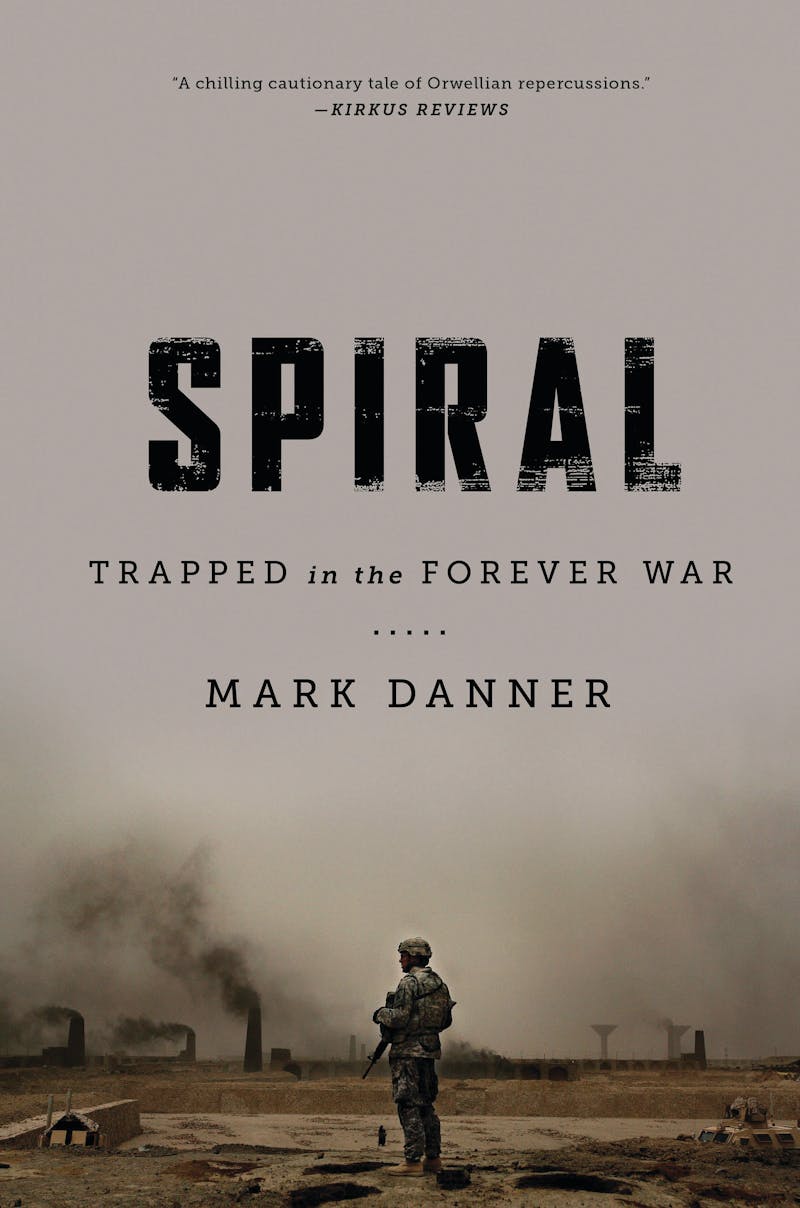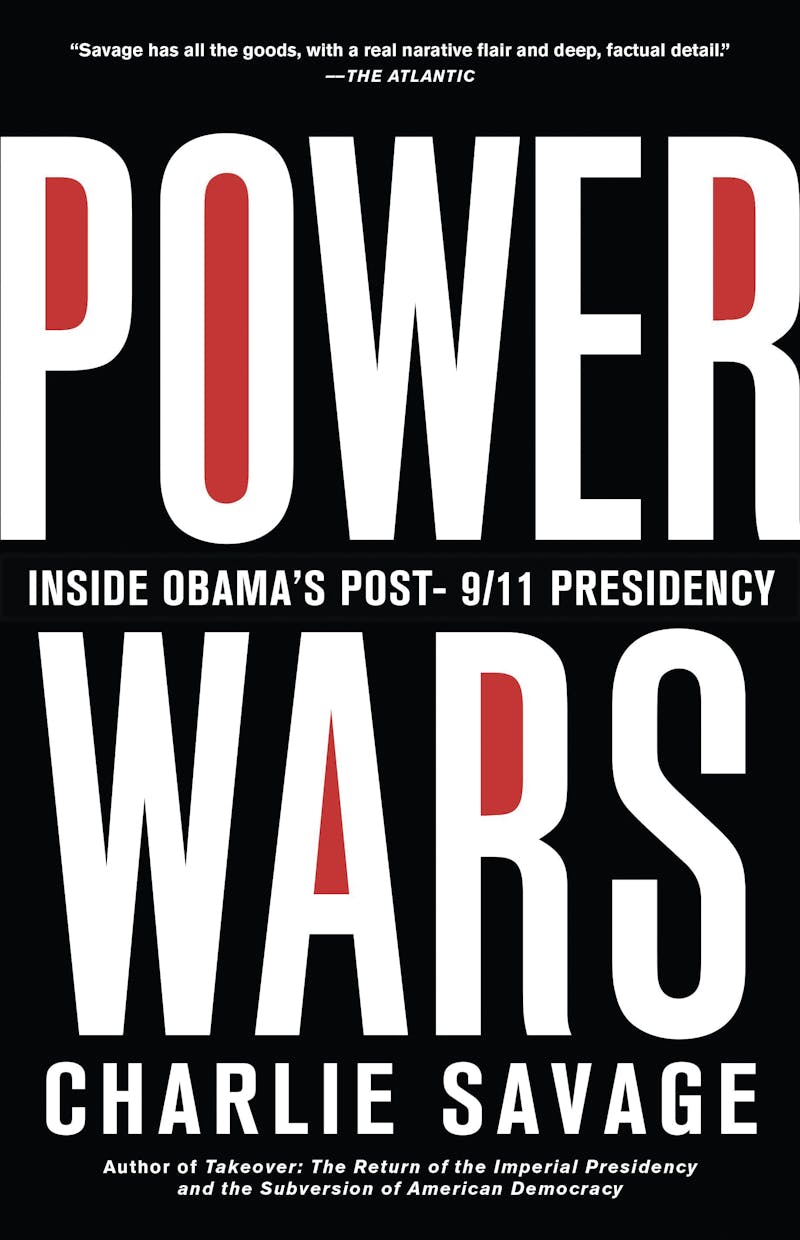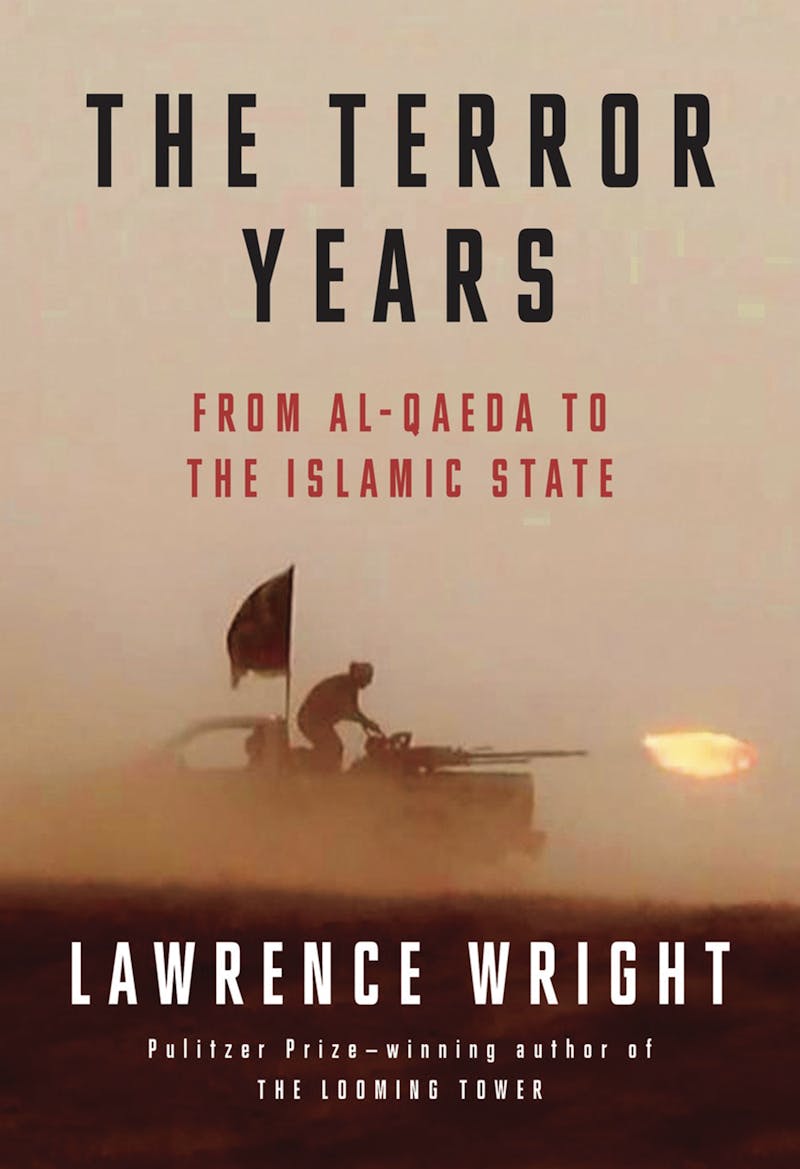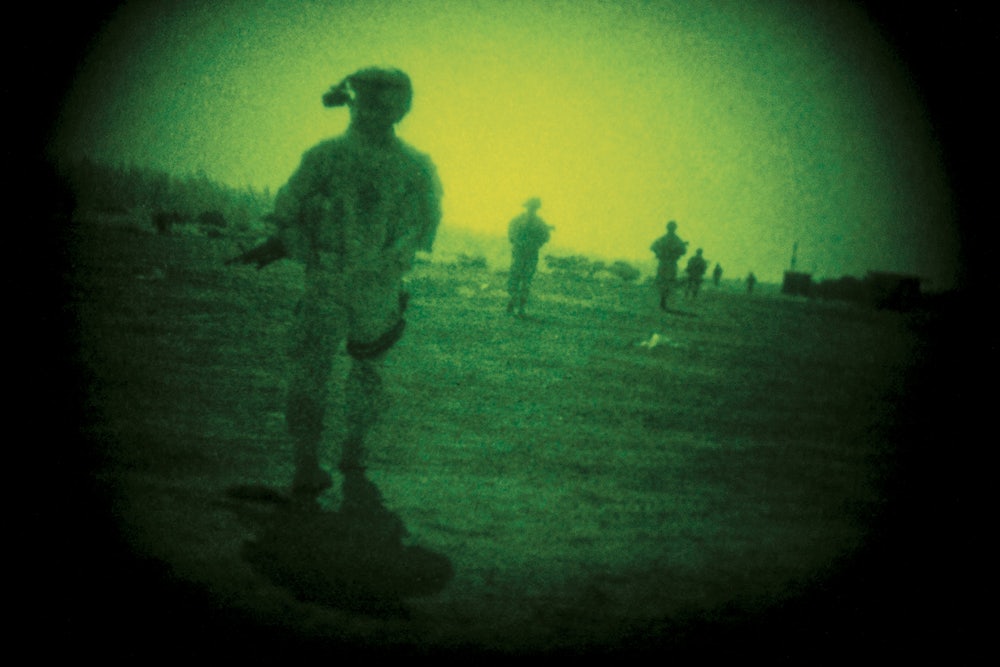Between the end of the administration of George W. Bush and the candidacy of Donald Trump, we have allowed ourselves to think too little about the role of ignorance in American political life. Already, the most infamous comment on varying states of enlightenment—Donald Rumsfeld’s meditation on “known unknowns”—reads like a period piece, a set of remarks one could never imagine issuing from an Obama official. Ignorance was a feature, not a bug, of the war on terror, one that allowed Bush apparatchiks to drastically expand executive power and to evade the often disastrous consequences of their actions. But while the Bush years brought the most obvious missteps, from the Iraq War to waterboarding, Obama has continued to wage war from a position of not knowing—or, at least, of not knowing enough.

This persistent ignorance is the theme of Mark Danner’s new book, Spiral: Trapped in the Forever War. An acclaimed journalist and professor, Danner has reported from Iraq, the Balkans, and Haiti; in 2009, he obtained a copy of the International Committee of the Red Cross report on torture at CIA “black sites.” Unlike other recent books on the subject—by New York Times investigative journalist Charlie Savage and New Yorker writer Lawrence Wright—Spiral offers few new facts. But all three books tell a story about how the war on terror has remained tragically mired in what Rumsfeld called the “unknown unknowns.” As the war has shifted from Iraq to Afghanistan, from extraordinary rendition to drone strikes, America has failed to come up with an endgame. Our bureaucrats and operatives, every step of the way, have sought new tools and bent laws to combat the threat of terrorism, yet have lagged just behind real time and made little progress.
Spiral focuses on the “state of exception,” the period after the attacks of September 11 when civil liberties were systematically rolled back. Most states of emergency and constitutional dictatorships eventually end, but the war on terror, as the book’s subtitle suggests, rolls on with a seemingly unstoppable inertia. The book is divided into two sections: one on the state of exception as enacted under Bush, and a second on its continuation under Barack Obama. It also offers a telling glimpse of what is to come. The next president, after all, is unlikely to end the war. And the threat the war seeks to remove—jihadi terrorism—continues to grow, as evidenced by recent headlines about Iraq and the spate of “lone wolf” attacks at home.
Ultimately a polemic, Spiral is at its strongest when taking on the Bush administration’s worst excesses: the unwarranted secrecy and boneheaded assumptions that led to disaster. Danner draws evidence from the rich histories of the era, deftly repurposing the words of former administration officials, many of them still loyal to the president they served. These accounts—memoirs and speeches by the likes of Rumsfeld, Condoleezza Rice, and Dick Cheney—constitute a uniquely and unintentionally revealing genre: Call them the Unknowing Knowers. By artfully running down their frequent lies, their confident declarations of truth that turned out to be abysmally wrong, and their post-hoc justifications for their mistakes, Danner constructs a terrifyingly clear picture of the distorted logic of the Bush administration.
Take the case of Zayn al-Abidin Muhammad Husayn, the young Saudi-born Palestinian better known by his nom de guerre, Abu Zubaydah, whose story runs through the first half of Spiral. Zubaydah was arrested in Pakistan in the months after the September 11 attacks and declared “a trophy in the war on terror” by no less than President Bush. Rumsfeld called him a “close associate” of Osama bin Laden, boasting that he was “if not the number two, very close to the number two person” in Al Qaeda. For good measure, Rumsfeld added: “I think that’s well established.” Well established in statements made by administration officials, perhaps, but not by the facts. In reality, Zubaydah’s role in Al Qaeda was vastly overstated. Though a mujahideen—a veteran of the Afghan civil war who worked at a jihadi training camp—he wasn’t involved in planning September 11 or subsequent attacks on the United States.
After the FBI took Zubaydah into custody, he initially provided his interrogators with limited but accurate intelligence about Al Qaeda. Then the CIA realized who he was, and decided to torture him. Zubaydah suffered strain positions, sleep deprivation, sensory overload, and 83 rounds of the painful and frightening simulated drowning known as waterboarding. The ordeal, in which Zubaydah lost an eye, exemplifies many of Danner’s central themes—the war on terror’s brutality, the counter-productiveness of its methods, and above all, the pervasive ignorance that led to its failures. If the Bush administration believed its own assertions about Zubaydah’s importance, he must by definition know more than he was letting on. Thus Zubaydah’s own ignorance, and the CIA’s ignorance of his ignorance, became a justification for his prolonged torture.
Bush’s war on terror was rife with these circular justifications. Policies were said to be born of necessities that turned out to not exist; the radical expansion of executive authority and illegal use of torture were based, in turn, on those unfounded policies. The failure to prevent the largest terrorist attack in American history, so the reasoning went, must have occurred not because officials improperly utilized the tools in place to guard against such an attack, but because they needed larger, more powerful tools. Danner rightly sees this not only as a tactical shift, but as a bit of ass-covering and, moreover, a political maneuver:
After declaring the war on terror, they could ascribe the failure to stop the 9/11 attacks mostly to the previous administration, to its methods: as if the imposition of the state of exception, and the claim that the struggle to protect Americans from terrorists was in fact a “war on terror,” marked a bright line between Republican and Democratic administrations.
As the second half of Danner’s book demonstrates, when Obama came to power and waged his own war on terror, that line dimmed drastically. There would be no return to a law enforcement paradigm for combating terrorism.
While Danner acknowledges that many of Obama’s failings are rooted in Bush’s policies, because that is where the new president was forced to seed them, he largely overlooks the political realities Obama has faced, including a hostile Congress that has blocked any effort to close Guantanamo. He also pays too little attention to Obama’s attempts to end large military engagements and his decision not to wade into the thick of the Syrian civil war. But like other liberal critics of Obama—such as David Bromwich, who casts Obama’s whole presidency as “a large lost chance”—Danner is deeply disappointed in the president’s choices in the situations where he has had the authority to act on his own. Obama ordered that the United States would no longer torture, for instance, but failed to bring to justice those who perpetrated torture under Bush. He escalated the war in Afghanistan—now the longest official war in American history—and failed to halt the conflict when the escalation proved fruitless. Late in his presidency, he has lamented that extremism will not be defeated by force alone, but he has failed to find an alternative to the borderless shadow war of covert missile strikes and special forces raids that he greatly expanded.
This shadow war, too, is waged in ignorance. Who are the people we are attacking with missiles fired from drones? We don’t always know. Sometimes they merely match a “signature” of terrorist-like activities. Who have we actually killed with those bombs? We’re just not sure. The government’s calculus for determining enemy combatants comes damned close to stating that if they died, they must be terrorists. A legal framework now exists for assassinating American citizen terrorists abroad. The boundaries of the shadow war, over both space and time, are seemingly permanent known unknowns.
This legacy of perpetual ignorance will live on in the next administration. Both Hillary Clinton and Donald Trump are likely to expand the war on terror in their own ways. Clinton’s record as a senator, secretary of state, and presidential candidate shows her to be willing to rely heavily on the overt military means by which conflict is waged. A fierce advocate of the disastrous intervention in Libya, she pressed inside the administration for a more forceful response to the Syria crisis. During her candidacy, she has called for the imposition of a no-fly zone over part of the country, a tack the Pentagon and defense analysts alike warn would represent a significant escalation and require tremendous resources, including tens of thousands of troops. Despite Trump’s claim that he opposed the Iraq War—though he in fact endorsed the effort before it was underway—he has promised not a slight escalation of Obama’s war on terror, but a full-on reversion to the greatest excesses of the Bush years. “I would bring back waterboarding,” he declared from a GOP debate stage in February. “And I would bring back a hell of a lot worse than waterboarding.” The fact that Trump went on, after that declaration, to win the Republican nomination speaks to one of Obama’s greatest failings: He did not ensure that the precedents he set, either by action or inaction, put an end to the brutal and ineffective tactics of the war on terror.

Indeed, Obama not only continued many of Bush’s policies, he opted to root them in legislation and oversight by the courts. In Power Wars: Inside Obama’s Post-9/11 Presidency, Savage chronicles this course in meticulous detail. He lays out the argument that Obama is not a civil libertarian, but rather a purveyor of the rule of law. Where a civil libertarian might balk at assassinating Americans abroad without a trial, a president chiefly concerned with the rule of law seeks to ground the tactic in lengthy and, he hopes, sound legal opinions. The distinction is subtle, but it explains the fundamental paradoxes of Obama’s policies in the war on terror. While making cosmetic reforms amid a public debate, he preserved much of the surveillance state’s power; he sought (and failed) to find a specific legal underpinning for the shadow war; and he codified policies that paved the way for permanent, indefinite detention. Even under Savage’s illuminating construct, however, it is hard to fathom how a rule-of-law president could allow blatant violators of law at the highest levels of government—the authors of Bush’s torture policies—to go unpunished.
Though Savage doesn’t explicitly point to ignorance as a cause of the continuing failures of Obama’s approach, it is apparent in his reporting. He pinpoints the attempted bombing of an American airliner on Christmas Day, 2009—“a stomach- churning near miss”—as a turning point. It was the fear of unknown future attacks that motivated Obama to continue and even extend many Bush policies, involving an overarching reliance on state secrets in court and an escalated campaign to ferret out government sources who give information to the press. Obama’s attack on leakers represents, at its core, a full-throated endorsement of the essential underpinning of Bush’s policies: the need to keep the American public in ignorance.

The government, however, wasn’t the only force keeping citizens in the dark: Sometimes journalists did it themselves. In The Terror Years: From Al-Qaeda to the Islamic State, Pulitzer Prize—winner Lawrence Wright offers a window into one such incident—a small blip, to be sure, but a shocking one nonetheless. The book is composed of stories that originally appeared in the New Yorker, some of which have since been expanded and revised. In the prologue, Wright reveals that he censored himself at the behest of one of his subjects, recalling the editing process of his 2008 profile of Mike McConnell, a Navy admiral turned director of national intelligence:
During the course of one of our interviews, McConnell told me that he had been “tortured.” He meant that while he was undergoing survival training in the navy, he had been subjected to physical abuse that was supposed to prepare him to deal with the possibility of being held captive. Later, while the article was being fact-checked, McConnell denied that he had made such a statement. When I reminded him that the interview had been taped, he begged me to drop that statement because he said it would cost him his job. It wasn’t my goal to have McConnell fired, and he had been unusually generous in granting me access. But I did wonder if I made a mistake in omitting that portion of the conversation from the New Yorker profile that followed, since I believe it was pertinent to the national conversation we were having about torture at the time. McConnell is now retired from government, and I’ve restored his remarks.
With the possibility of a Trump presidency looming, “pertinent at the time” seems like a vast understatement. Torture remains a hotly debated, if partisan, tactic in the war on terror, with Trump’s successful primary bid demonstrating that an avowedly pro-torture position can win out. Having a high-ranking government official speak of “enhanced interrogation techniques” as “torture”—something the Bush administration assiduously avoided—might not have altered our current state of affairs. But if McConnell had been fired for using the word, it would have stood as a powerful point in the debate. The only government official held accountable for torture would have been one who called it by its name.
Wright’s stories span both the Bush and Obama administrations—everything from Al Qaeda’s origins to the war against the Islamic State. Although his subjects often exemplify the courage of exceptional individuals, they unwittingly underscore the failures of our institutions. Yes, heroes abound in The Terror Years. There is Ali Soufan, the FBI agent who opposed torture, and a shadowy figure known as Dr. Fadl, an Islamist thinker who helped shape Al Qaeda but came to question terrorism. But few, if any, of their stories end with victories. In the book’s closing chapter, Wright chronicles the efforts of David Bradley, publisher and philanthropist, to help recover hostages taken by the Islamic State. But the U.S. government, in its stubbornness, becomes an obstacle to rescuing victims of terror: In the end, four of the five aid workers and journalists whom Bradley was trying to rescue are executed.
We are still in the “Terror Years,” as Wright has rendered it in his title, and we will be for the foreseeable future. In 2014, according to government estimates cited by Danner, 32,727 people died worldwide in terrorist attacks. In 2010, that number was 13,186. In 2002, it was 725. What allows us to continue a war that has so transparently failed? For one, the burden of terrorism has shifted elsewhere: Even as the international body count spirals out of control, few Americans have died at terrorists’ hands since September 11. Of the 32,727 victims in 2014, for example, only 24 were Americans, none of whom were killed on American soil. In June, the same month when 49 Americans were killed in Orlando in an act of terror, at least 55 people died in suicide bombings in and around Baghdad. On a single day in May, at least 80 people in the Iraqi capital died in four separate bombings.
Danner points again and again to a memo issued by Rumsfeld on October 16, 2003, with the subject line: “Global War on Terrorism.” In it, Rumsfeld speaks of our lack of “metrics to know if we are winning or losing the global war on terror,” and asks, “Are we capturing, killing, or deterring and dissuading more terrorists every day than the madrassas and the radical clerics are recruiting, training, and deploying against us?” Thirteen years later, the answer seems obvious: no. There are, as Rumsfeld himself once put it, at least a few “things we know we know.”
